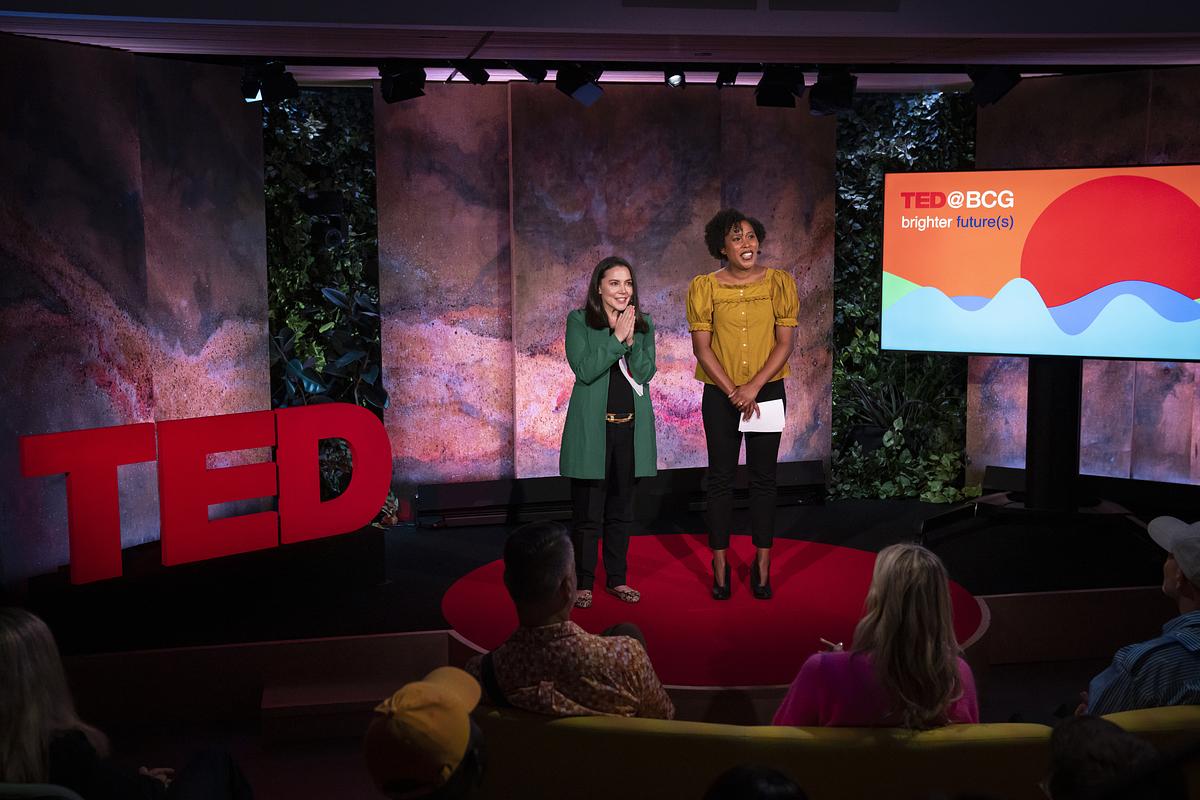
Hosts Julia Dhar and Whitney Pennington Rodgers speak at TED@BCG: brighter future(s) at the TED World Theater in New York City on September 15, 2022. (Photo: Gilberto Tadday / TED)
Predicting the future can sometimes feel impossible, but there are clear paths we can follow to take action on the issues of the day. In a day of talks and performances, 16 leading minds gathered to present promising and hopeful solutions to problems related to health care, the economy, modern leadership and more.
The event: TED@BCG: brighter future(s) is the thirteenth event TED and Boston Consulting Group (BCG) have co-hosted to uplift forward-thinking speakers from around the globe. Hosted by TED current affairs Curator Whitney Pennington Rogers and BCG managing director and partner Julia Dhar (a past TED speaker herself!).
When and where: Thursday, September 15, 2022 at the TED World Theater in New York City
Speakers: Aparna Bharadwaj, Gareth Thomas, Tolu Oyekan, Dave Sivaprasad, Phnam Bagley, Tessa Clarke, Alex Koster, Gitte Frederiksen, June Sarpong, Zineb Sqalli, Will Guidara, Cristina Junqueira, Elena Crescia, Keenan Scott II, Veronica Chau, Nithya Vaduganathan, Paul Catchlove

KERA performs at TED@BCG: brighter future(s) at the TED World Theater in New York City on September 15, 2022. (Photo: Gilberto Tadday / TED)
Music: Musician KERA performed their serene and soulful songs “Bright Future Ahead” and “Vitamin T” for the audience.
The talks in brief:
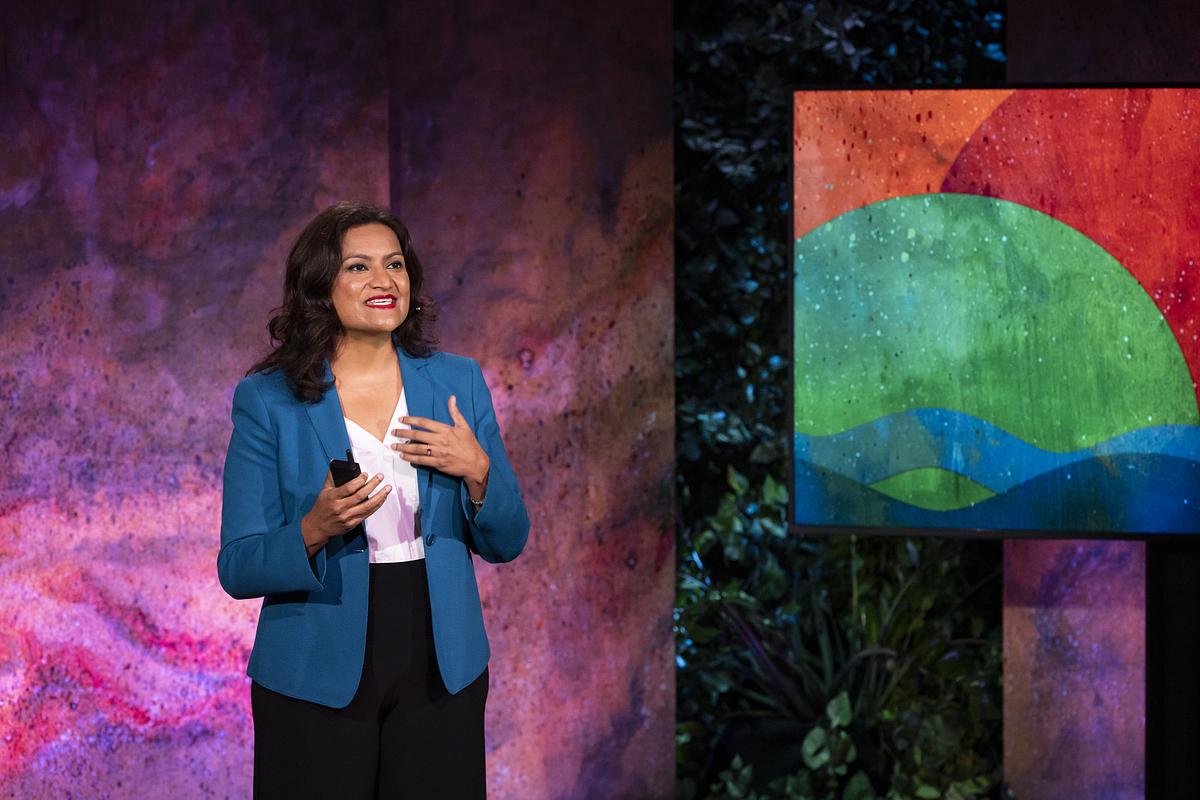
Aparna Bharadwaj speaks at TED@BCG: brighter future(s) at the TED World Theater in New York City on September 15, 2022. (Photo: Gilberto Tadday / TED)
Aparna Bharadwaj, global consumer strategist
Big idea: People can benefit from finding the hidden connections and secret similarities.
Why? Businesses tend to focus on what separates consumers in one country from another. Aparna Bharadwaj shows that it’s much more interesting for businesses to instead look for unexpected similarities across borders. Her research has revealed insights like: Chinese and Indonesians like to share snacks in groups, rather than eating alone; car-buying habits in China look similar to those in Nigeria, motivated by status more than utility; and Americans and Russians share similar motivations when shopping for clothes, looking for on-trend apparel instead of performance wear. “These are patterns where you least expect them,” Bharadwaj says, as businesses wouldn’t normally think to group consumers in these countries together. These commonalities go beyond commercial opportunities — they provide a message of hope for the world. “If only people knew that we are similar in the most profound ways, in our everyday activities … maybe we would understand and empathize with each other,” she says.
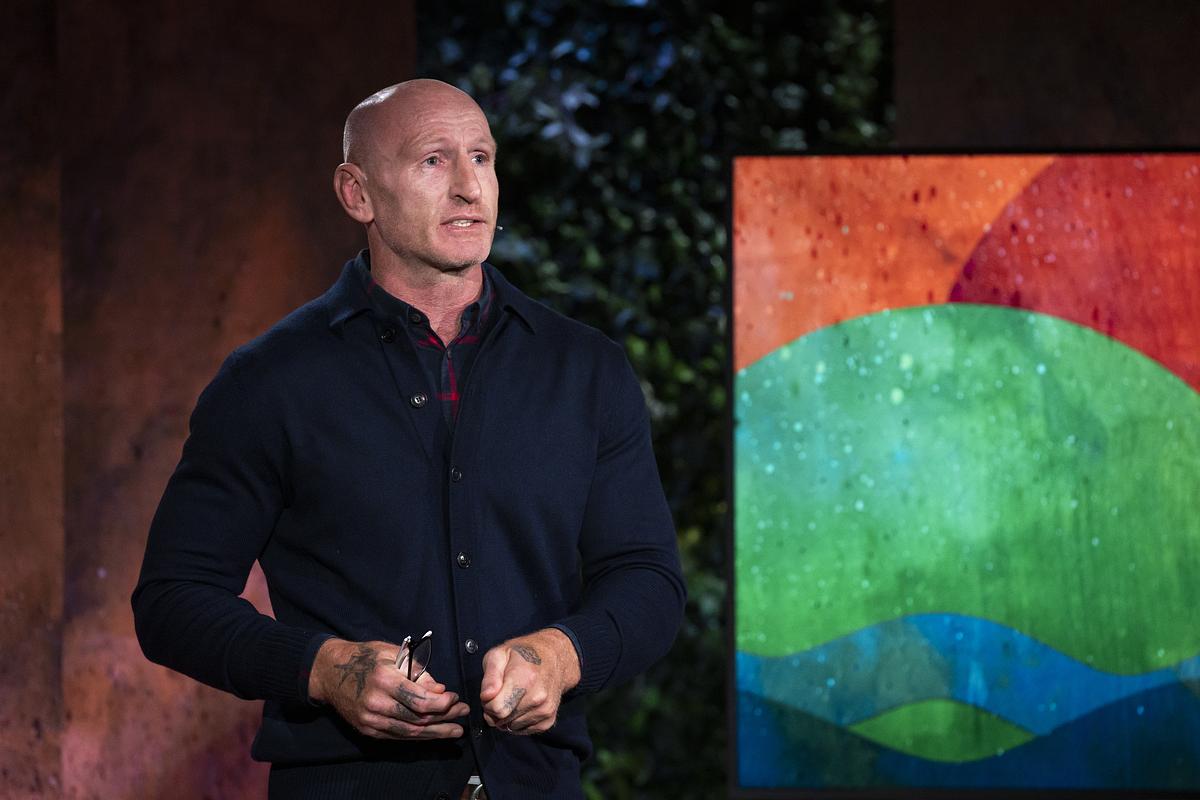
Gareth Thomas speaks at TED@BCG: brighter future(s) at the TED World Theater in New York City on September 15, 2022. (Photo: Gilberto Tadday / TED)
Gareth Thomas, former pro rugby player, stigma challenger
Big idea: Together, we can tackle stigma.
How? The tattoo on Gareth Thomas’s knee is dark, ghoulish and threatening — a skeleton that represents the imminent death he felt when he first was diagnosed with HIV. The wings beneath it symbolize the freedom he felt once he finally found his voice: “Like a dead man coming back to life,” he says. The crown atop the skull embodies leadership against discrimination and misinformation. Each adornment represents his journey living, celebrating and reclaiming his truth in the face of stigma and shame. Now he’s on a mission to fight for the same for others. Thomas demystifies and redefines what it means to live with HIV, urging us to normalize conversation around all vilified conditions. The more people who know the facts — and stand up against stigma — the more the truth can spread, reducing shame and giving the world more of a fighting chance to make right what has been wrong for so long.
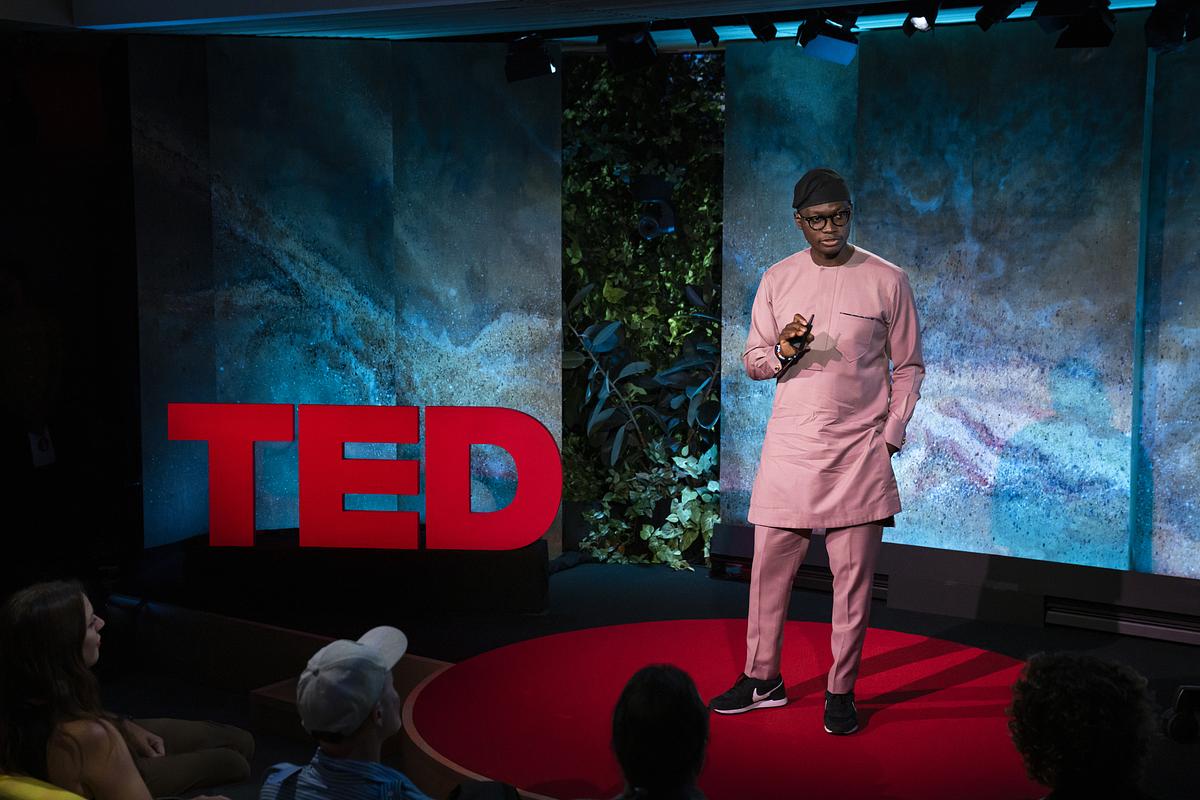
Tolu Oyekan speaks at TED@BCG: brighter future(s) at the TED World Theater in New York City on September 15, 2022. (Photo: Gilberto Tadday / TED)
Tolu Oyekan, inclusive finance promoter
Big idea: To meet developmental goals on the African continent (and beyond), historically non-profit objectives must be treated with the same urgency that for-profit initiatives enjoy.
How? In the for-profit sector, a business’s top priority is ensuring that the benefits of their efforts outweigh the investments. Tolu Oyekan believes that non-profits should borrow a page from their playbook. He sets up a crucial example of this approach: access to financial services across his native Nigeria is extremely scarce. Oyekan shows us how data-driven and scalable solutions can transform banking for rural and urban communities alike. Treating this critical lack of access with a lean approach that empowers citizens, Oyekan explains how agent banking — an individual acting on behalf of a bank and providing financial services from established local businesses — could be an affordable fix, as opposed to expensive solutions like adding physical ATMs and bank branches. This way, people can access banking resources at their local grocery store, barber shop or anywhere an agent sets up shop. “When we include the profit motive in the development work that we do, we can go fast and far, together, to address development challenges and change the world for the better,” Oyekan says.
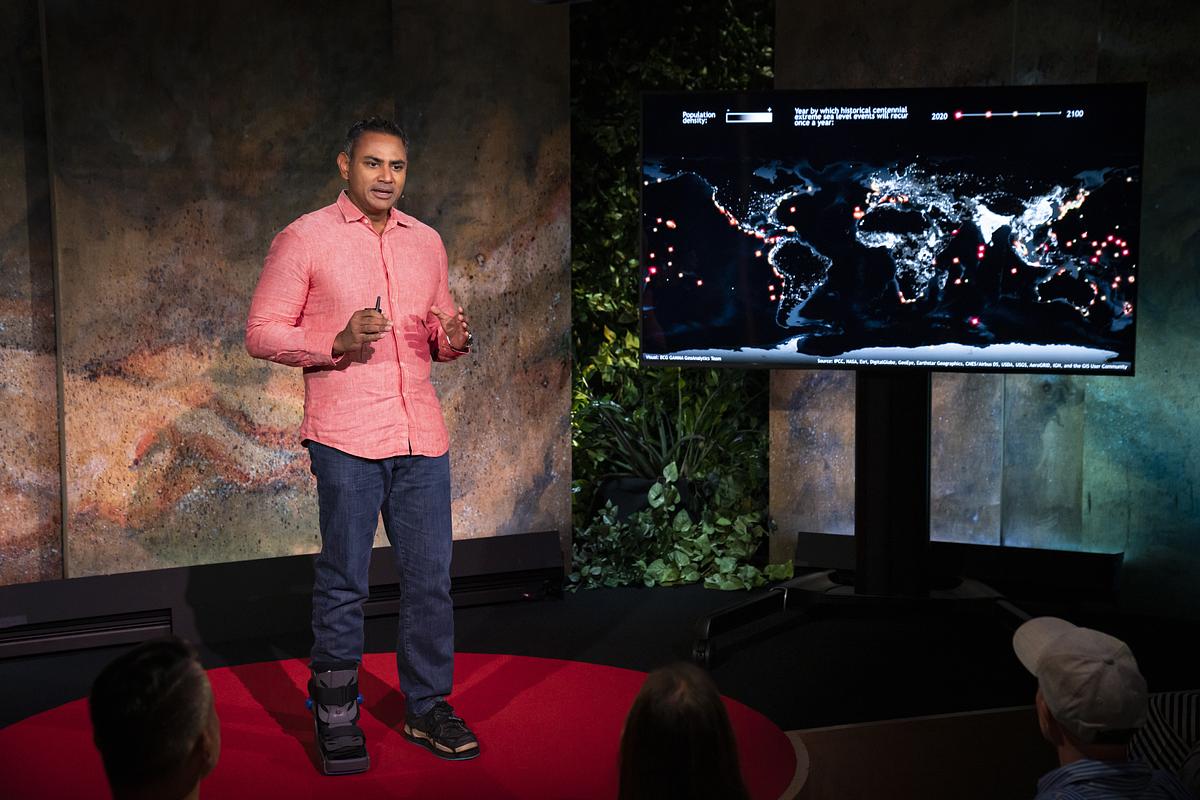
Dave Sivaprasad speaks at TED@BCG: brighter future(s) at the TED World Theater in New York City on September 15, 2022. (Photo: Gilberto Tadday / TED)
Dave Sivaprasad, coastline resilience advocate
Big idea: When it comes to mitigating the impact of climate change on coastal areas, it’s not about finding a singular solution — it’s about finding the right mix of solutions.
Why? Around forty percent of humanity lives near a coast, and their livelihoods are dependent on the conditions of the environment. From flooding and ocean acidification to stronger storms and changes in wind patterns, Dave Sivaprasad lays out the ever-increasing risks climate change poses to these areas. To deal with these more intense conditions, he shares a multitude of approaches coastal populations can implement to brace themselves for the (metaphorical and literal) storm. Sea walls, stone barriers, mangrove restoration, land reclamation are all viable options, but the challenge is choosing the right mix to meet each community’s needs. “No two coasts are alike” says Sivaprasad — and neither are their respective paths to climate resilience.
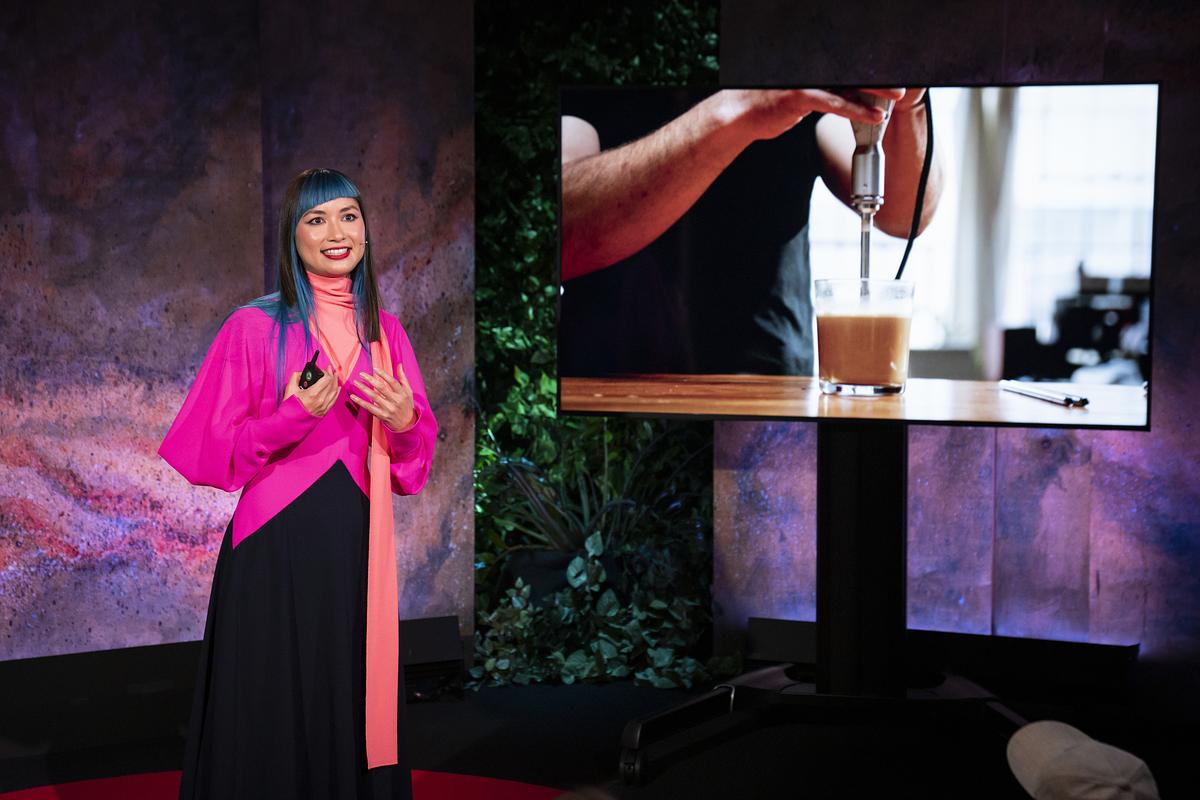
Phnam Bagley speaks at TED@BCG: brighter future(s) at the TED World Theater in New York City on September 15, 2022. (Photo: Gilberto Tadday / TED)
Phnam Bagley, designer and creative director
Big idea: With creative thinking and innovative design, people traveling beyond Earth could eat nourishing, flavorful food reminiscent of home.
How? When astronauts are hurtling through space, they typically eat what Phnam Bagley kindly calls “goop-in-a-bag.” The lack of gravity, limited storage and distance from Earth make it difficult for an explorer to enjoy a fresh, delectable meal. Meal time becomes even more complicated when you plan to send astronauts to Mars, a roundtrip journey of 2.5 to 3 years. To take on the challenge of making better astronaut grub, Bagley and her team designed the Space Culinary Lab with flavor, nutrition and practically in mind. The system can mix coffee granules, hot water, ghee and collagen powder to make a coffee with both satisfying flavor and healthy omega-3 fatty acids. A hydroponic garden grows lettuce and microgreens for salad, while lasers cook rehydrated freeze-dried chicken with the same enticing pattern of grilled meats. For snacks, they grow carbon-negative microalgae like spirulina onsite, then mix it with oats, nuts, powdered berries and spices. Bagley’s designs have the potential to make space feel more human. They could improve life here on Earth as well, replacing non-regenerative agricultural methods with low-resource creative cooking.
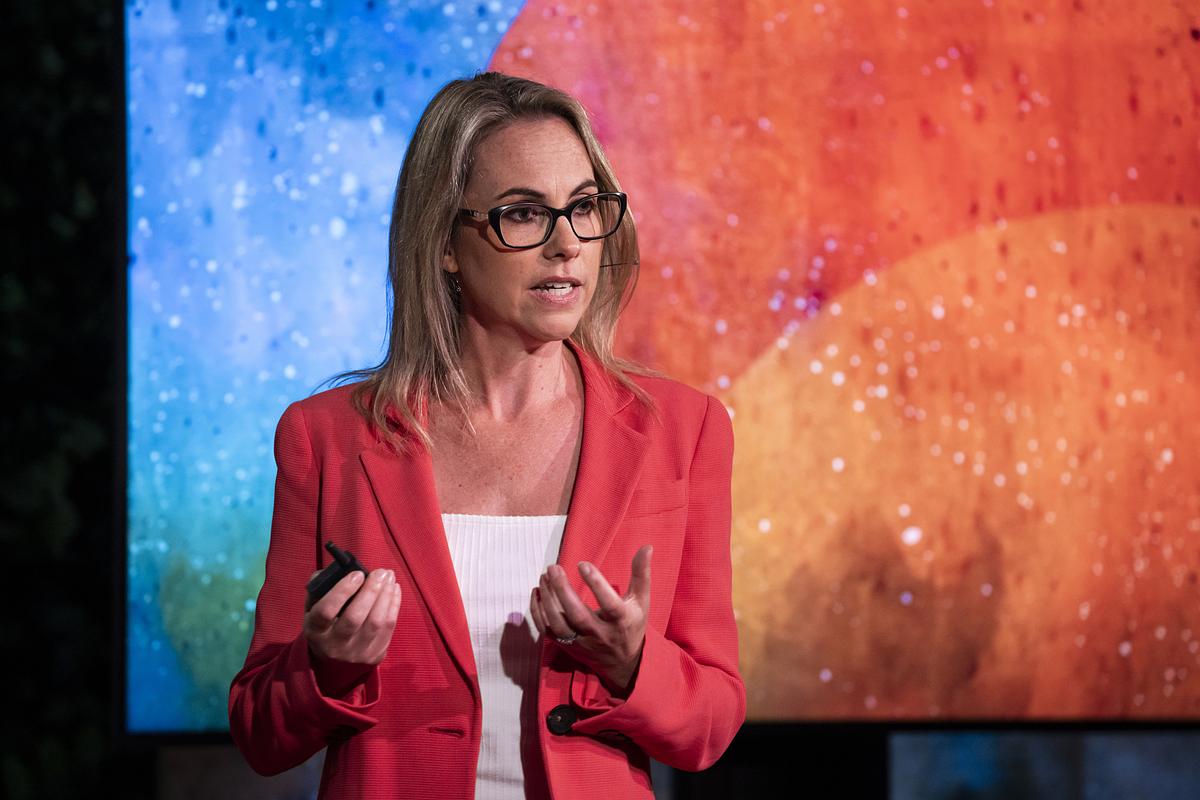
Tessa Clarke speaks at TED@BCG: brighter future(s) at the TED World Theater in New York City on September 15, 2022. (Photo: Gilberto Tadday / TED)
Tessa Clarke, sharing economy entrepreneur
Big idea: There’s a super simple solution to the climate crisis – sharing.
Really? Household consumption is directly responsible for 65 percent of all greenhouse gas emissions. Tessa Clarke thinks the most effective solution is something humans have been doing for thousands of years: sharing more and wasting less. Globally, one-third of all the food we produce each year is thrown away, a trillion-dollar squandering that ends up in landfills, producing carbon dioxide’s deadlier cousin, methane. And half of that waste comes from households. According to leading scientists, solving the food waste problem is even more important than transitioning to electric cars, solar panels or plant-based diets. To take on the problem, Clarke cofounded Olio, a free app that connects local communities around giving food away before it’s thrown away. They’ve empowered people to share 66 million portions of food, and this is just a tiny fraction of what’s possible. Users can also share home items, books, appliances, toys and more. “Sharing instead of shopping needs to become the default,” she says.
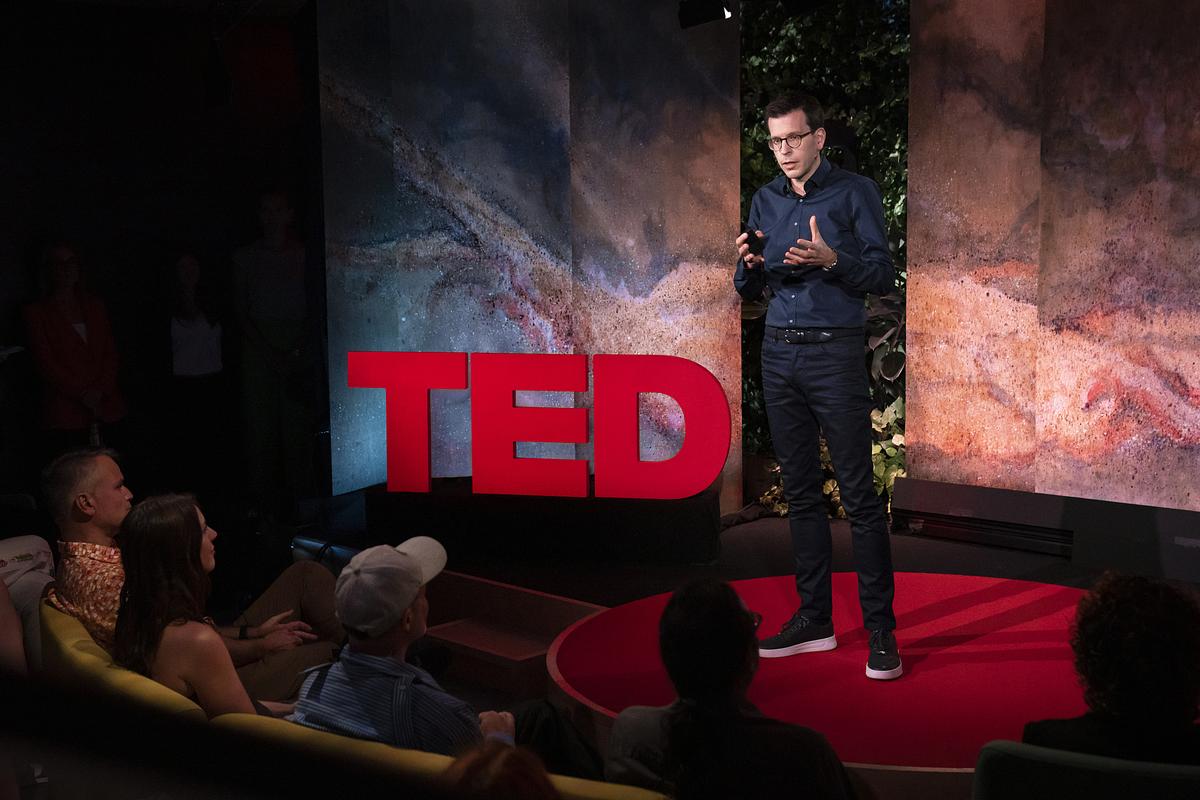
Alex Koster speaks at TED@BCG: brighter future(s) at the TED World Theater in New York City on September 15, 2022. (Photo: Gilberto Tadday / TED)
Alex Koster, mobility and software visionary
Big idea: The automobile industry is busy building the “Software Dream Car.”
How? The future of the automotive industry goes beyond clean fuels — software is poised to be a transformational force as well. If we take driverless cars as an eventual given, it’s time to dream up what their interior spaces will look like, says Alex Koster. As computer vision technology continues to advance, we’re moving towards what he calls the “Software Dream Car” — an augmented reality vehicle that fuses science fiction and luxury into a real-world environment overlaid with information and entertainment. What we see out our window will be limited only by our imaginations, says Koster, as our cars pilot us through rich virtual worlds in addition to taking us from point A to point B.
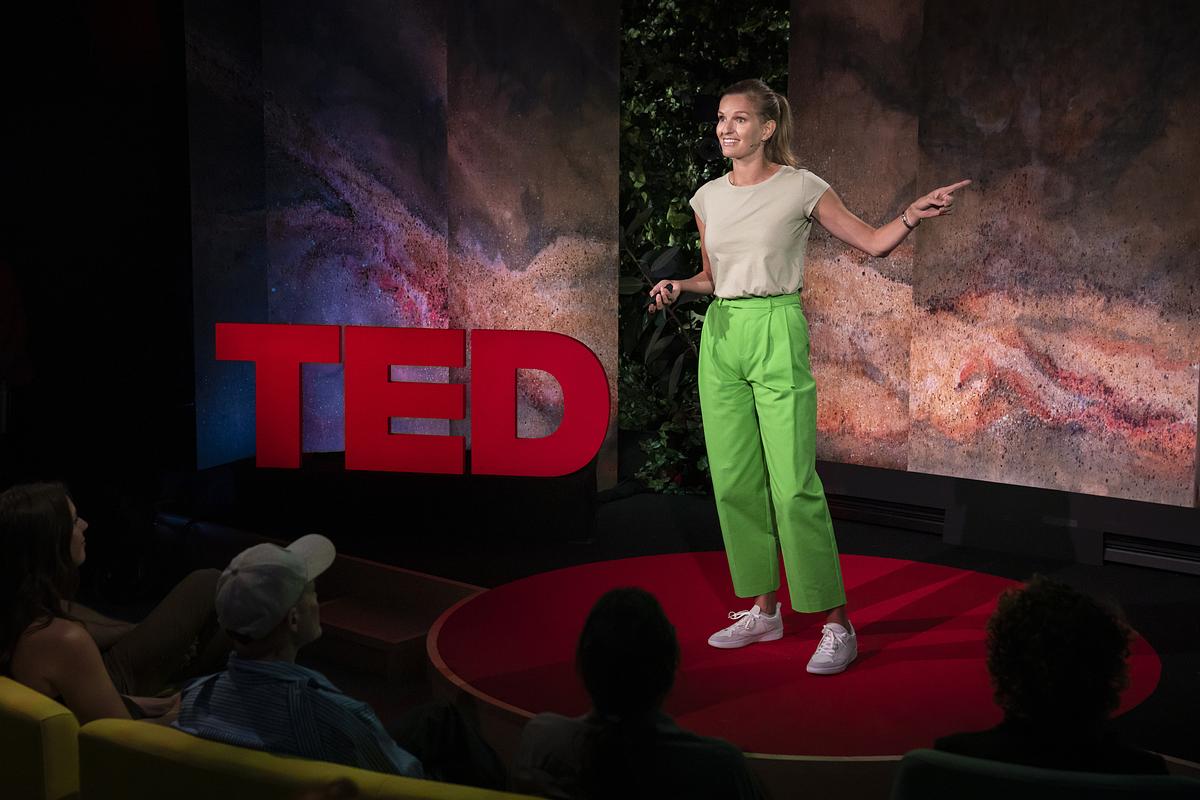
Gitte Frederiksen speaks at TED@BCG: brighter future(s) at the TED World Theater in New York City on September 15, 2022. (Photo: Gilberto Tadday / TED)
Gitte Frederiksen, leadership champion
Big question: Modern organizations are complex, multidirectional organisms, so why are we so invested in hierarchical leadership structures?
Some thoughts: When it comes down to it, leaders are only human. And when there’s only a small group of leaders moving at their own speed, bottlenecks are inevitable, organizational decisions flounder and leaders lose sight of the great ideas that often lie unnoticed in the margins. Gitte Frederiksen offers an innovative solution: leadership networks without labels, replacing the power of the few with the influence of many by emphasizing sharing and kindness. These complex human networks not only increase feelings of ownership, reduce stress and create better products, but they’re also “more beautiful, more multidimensional, more dynamic, more like nature,” says Frederiksen.
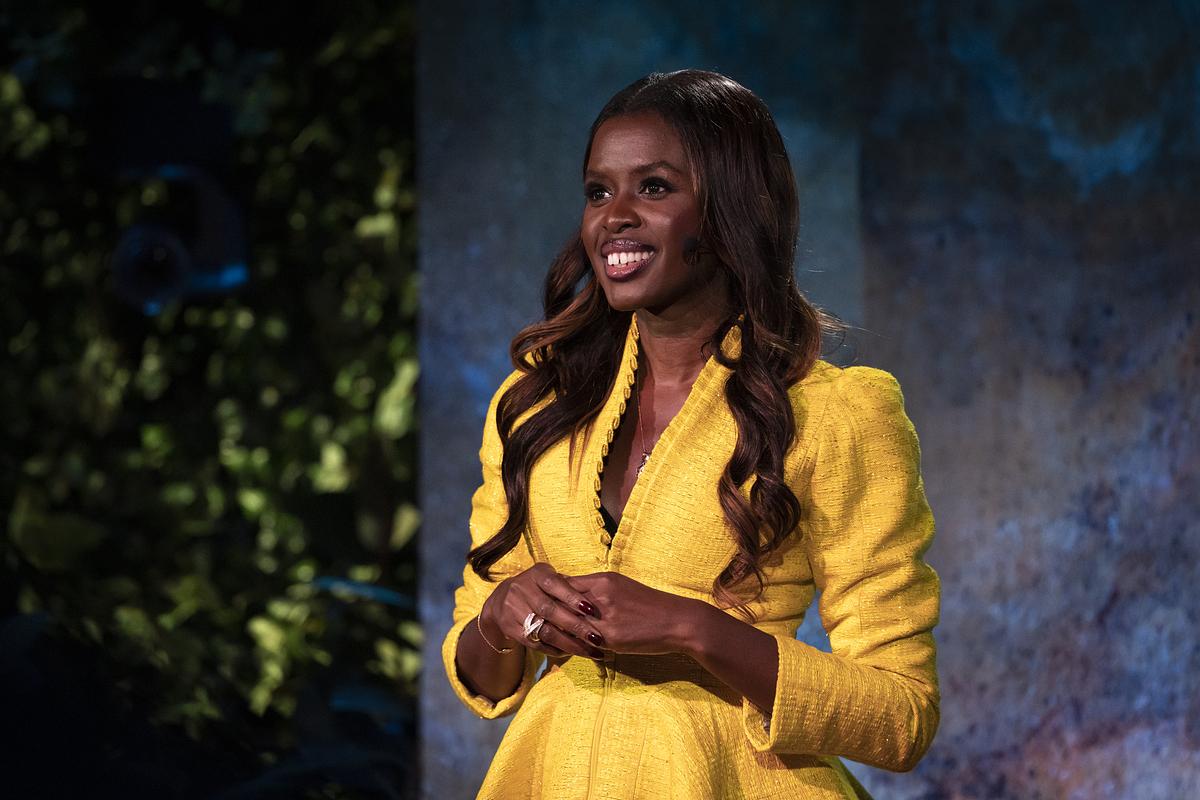
June Sarpong speaks at TED@BCG: brighter future(s) at the TED World Theater in New York City on September 15, 2022. (Photo: Gilberto Tadday / TED)
June Sarpong, diversity leader
Big idea: The next big disruption in business is in diversity, equity and inclusion (DEI).
How? “Rock star” leaders are those that disrupt business as usual — and June Sarpong thinks the same strategy can be used to move us forward on DEI. It all starts with uncomfortable connections, breaking with the status quo and developing a vision for a better future. When it comes to the workplace, people in power need to make the big leaps first. Consider FX Networks, which disrupted its previously lily-white programming roster and invested significantly in diverse directors and writers. In the process, it created critically and commercially successful content – which Sarpong says is truly “rock star behavior.”
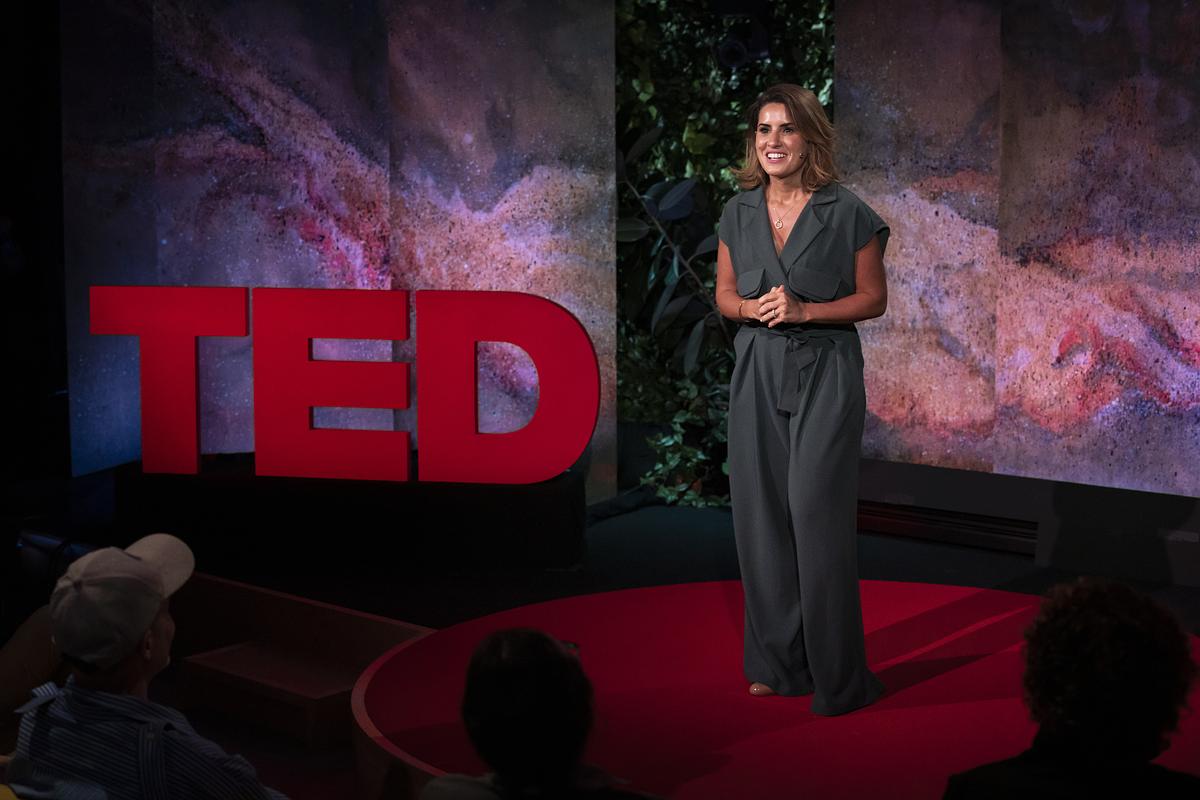
Zineb Sqalli speaks at TED@BCG: brighter future(s) at the TED World Theater in New York City on September 15, 2022. (Photo: Gilberto Tadday / TED)
Zineb Sqalli, gender and climate researcher
Big idea? The next few decades will see trillions invested in infrastructure improvement in the name of fighting climate change, but women will only benefit from these policies and programs as much as men if we are intentional about their inclusion.
How? Climate action has historically been designed with a “gender neutral” lens, but continuing in this manner could set gender equality back by fifteen years, says Zineb Sqalli. We need to consider women’s specific needs upfront, involve women in the design process and measure results so that we can correct course if needed. Cities like Vienna, Austria have already done this. With a diverse urban planning board, Vienna restructured its parks so teenage girls would feel more welcome; created a public campaign to educate the city on the new approach; and integrated a gender assessment into social housing and infrastructure contracts. These changes benefit everyone. By abandoning the gender neutral mindset and intentionally designing for women, Sqalli says, we could build both an environmentally sustainable and gender equitable world.
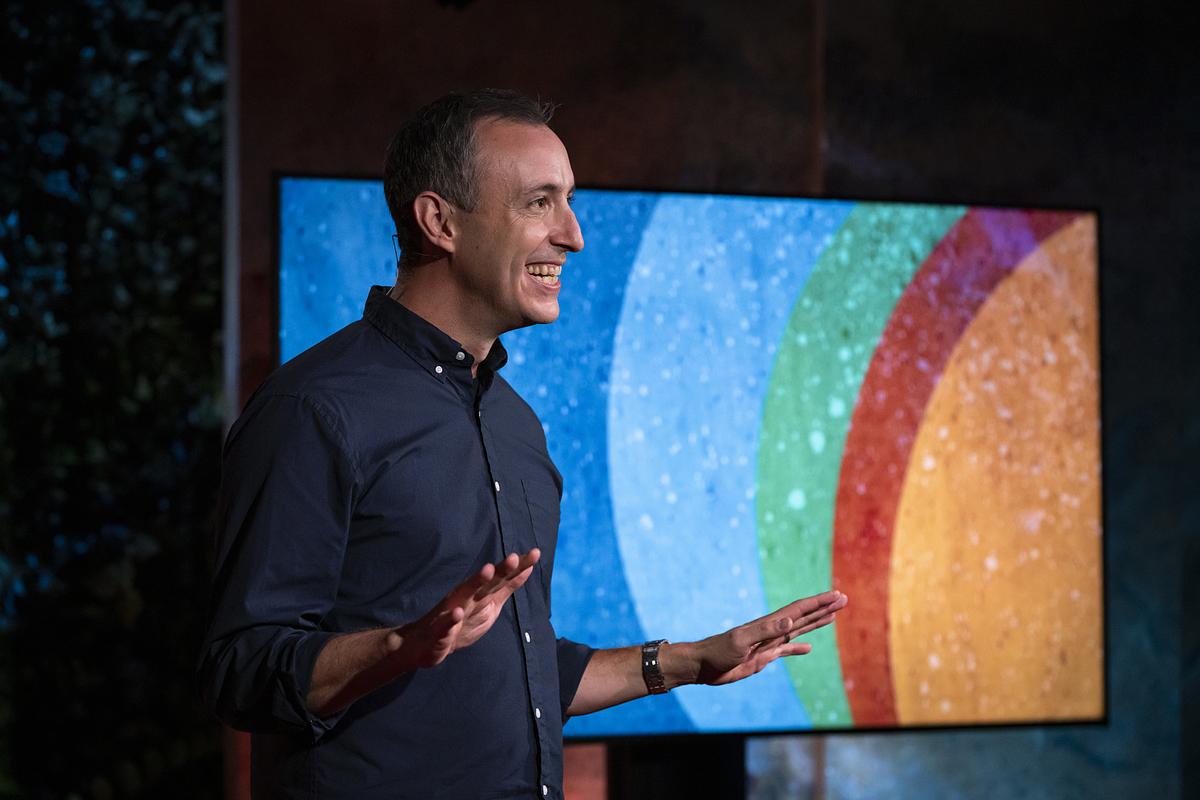
Will Guidara speaks at TED@BCG: brighter future(s) at the TED World Theater in New York City on September 15, 2022. (Photo: Gilberto Tadday / TED)
Will Guidara, restaurateur, author
Big idea: Unreasonable hospitality turns ordinary transactions into extraordinary experiences.
How? What does it take to earn the title “best restaurant in the world?” Ask Will Guidara, and he might tell you that the secret is a two-dollar, off-menu hot dog. Guidara is the former owner of Eleven Madison Park, a restaurant that claimed this distinction in 2017 under his leadership by pursuing a strategy of “unreasonable hospitality.” It all started when Guidara overheard a table of out-of-town guests regretting that their trip to New York City hadn’t included a taste of one of the city’s finest (and cheapest) culinary classics: a New York City hot dog. Eleven Madison Park is an exceptionally fancy establishment, but Guidara decided that if his guests wanted a hot dog, he’d make it happen. He ran out to the street, bought a hot dog from a sidewalk vendor and persuaded his chef to serve it. This simple gesture gobsmacked his guests — and it forever changed Guidara’s approach to service. He recounts other incredible experiences the Eleven Madison Park orchestrated for their patrons and offers strategies for anyone to make their hospitality a little more “unreasonable” — whether it be serving a guest or buying a gift (and creating a memory) for a loved one.
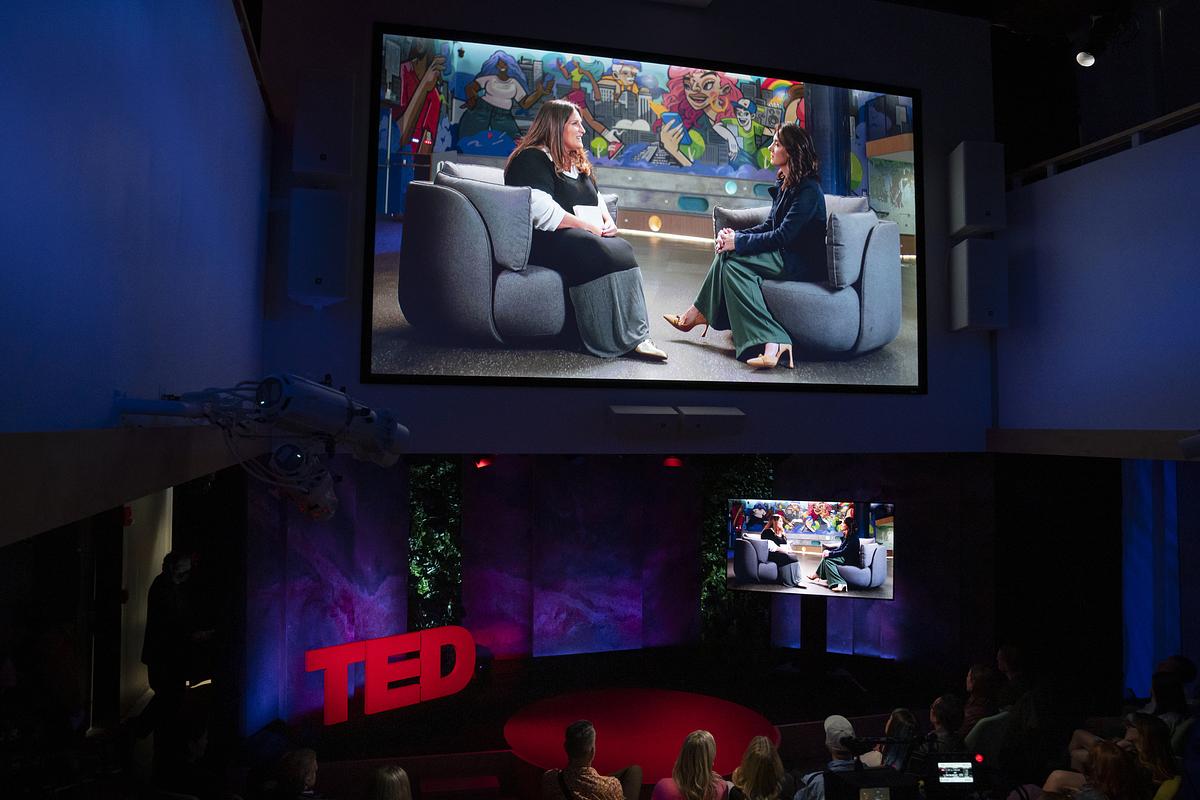
Elena Crescia (left) interviews Cristina Junqueira for TED@BCG: brighter future(s) at the TED World Theater in New York City on September 15, 2022. (Photo: Gilberto Tadday / TED)
Cristina Junqueira, entrepreneur, in conversation with Elena Crescia, social entrepreneur
Big idea: To disrupt an industry’s status quo, take customers’ pain seriously.
How? “It felt a little bit like going to prison,” says Cristina Junqueira, describing the heightened security and long wait times that were typical at Brazilian banks when she cofounded her online bank, Nubank. She was drawn to banking by this pain, which she identified as an opportunity to disrupt a stagnant industry in need of improvement. Fast forward nine years and Nubank has redefined how Brazilians access their money and participate in commerce. In conversation with social entrepreneur Elena Crescia, Junqueira discusses the transformative impact her decision to center customers’ experience has had in Brazil. According to Junqueira, Nubank serves more than five million people who had never previously engaged with the country’s financial system. The company’s efficient digital platform is imitable, she says, but what’s harder to emulate is Nubank’s customer-first mindset. As she puts it: “That’s where the real competitive advantage lies.”
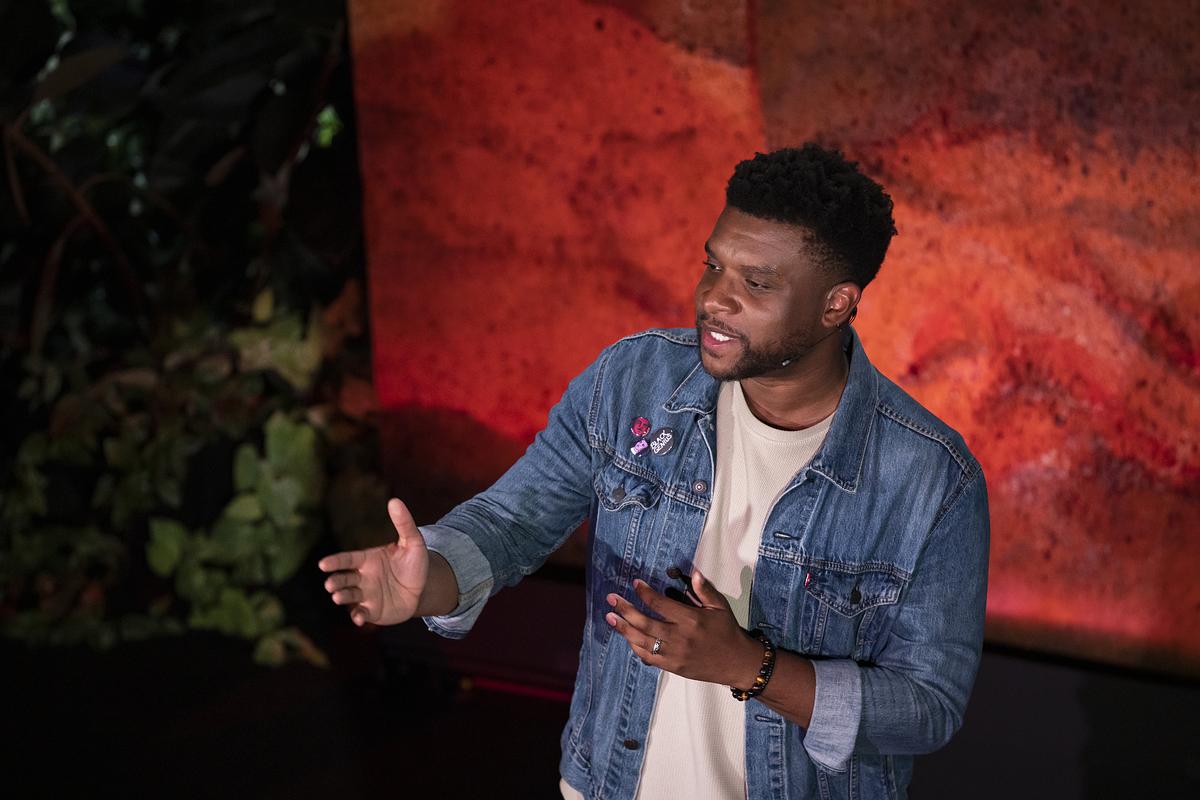
Keenan Scott II speaks at TED@BCG: brighter future(s) at the TED World Theater in New York City on September 15, 2022. (Photo: Gilberto Tadday / TED)
Keenan Scott II, playwright, poet, TED Fellow
Big idea: As a kid, Keenan Scott Il loved words, stories and superheroes — a passion that fueled his journey to becoming a celebrated playwright, producer, director and actor.
How? In every superhero narrative, says Keenan Scott II, there’s always an event that pushes the superhero to realize their power. For Scott, it was a poetry assignment in his eighth-grade English class. He struggled with dyslexia as a kid, but he soared when it came time to write a poem. He discovered that he already understood advanced literary devices like simile, assonance and slant rhyme because he’d encountered these techniques in the music he loved by artists like Tupac Shakur and Lemon Andersen. Scott continued to develop his craft outside the classroom by paying attention to words and the world around him. He listened to speech patterns in different parts of the city and heard the stories of his neighbors; he explored the work of other artists, poets and jazz artists whose creativity inspired his own. On the TED stage, Scott performs three stunning spoken word pieces that testify to the superheroic talent he cultivated despite the obstacles (read: kryptonite).
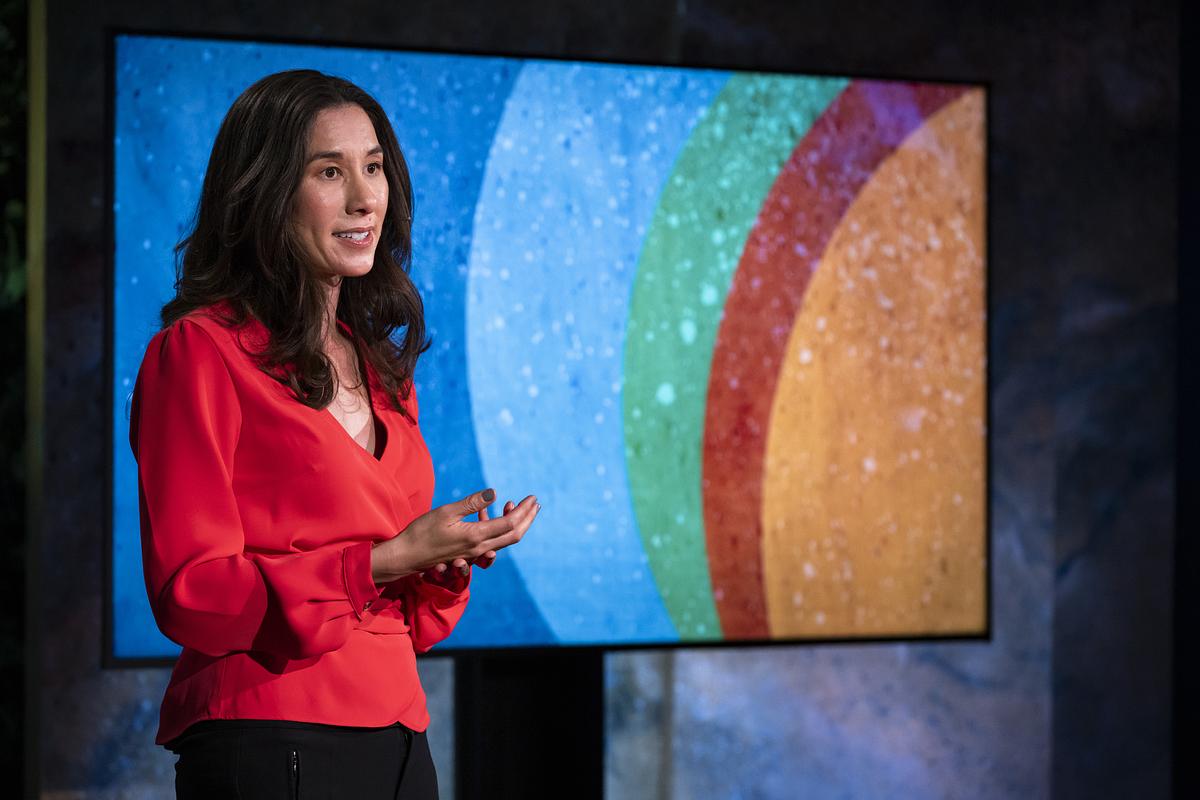
Veronica Chau speaks at TED@BCG: brighter future(s) at the TED World Theater in New York City on September 15, 2022. (Photo: Gilberto Tadday / TED)
Veronica Chau, sustainable investment professional
Big idea: To improve financing for sustainable and equitable housing, we need policies that stimulate demand and create a favorable investing environment.
Why? Faced with the climate crisis, financial institutions have pledged trillions to transform the economy — but right now, says sustainable investing expert Veronica Chau, that money is not flowing at the speed it needs to. Taking the housing sector as a case study, Chau explains that the US is facing two challenges at once: housing is scarce and the buildings we live in are a major contributor to climate change. To reconcile and overcome these two challenges, we need to radically increase financing for sustainable housing. Banks want to reach net-zero, she says; the problem is that government housing policy is not doing enough to create a low-risk environment for investment. By creating robust investment incentives; strengthening requirements for energy efficiency; investing in programs that help low-income communities retrofit their homes; and offering permits for affordable, energy-efficient housing, local governments can create a favorable financing environment and ensure financing flows to areas where it’s needed most.
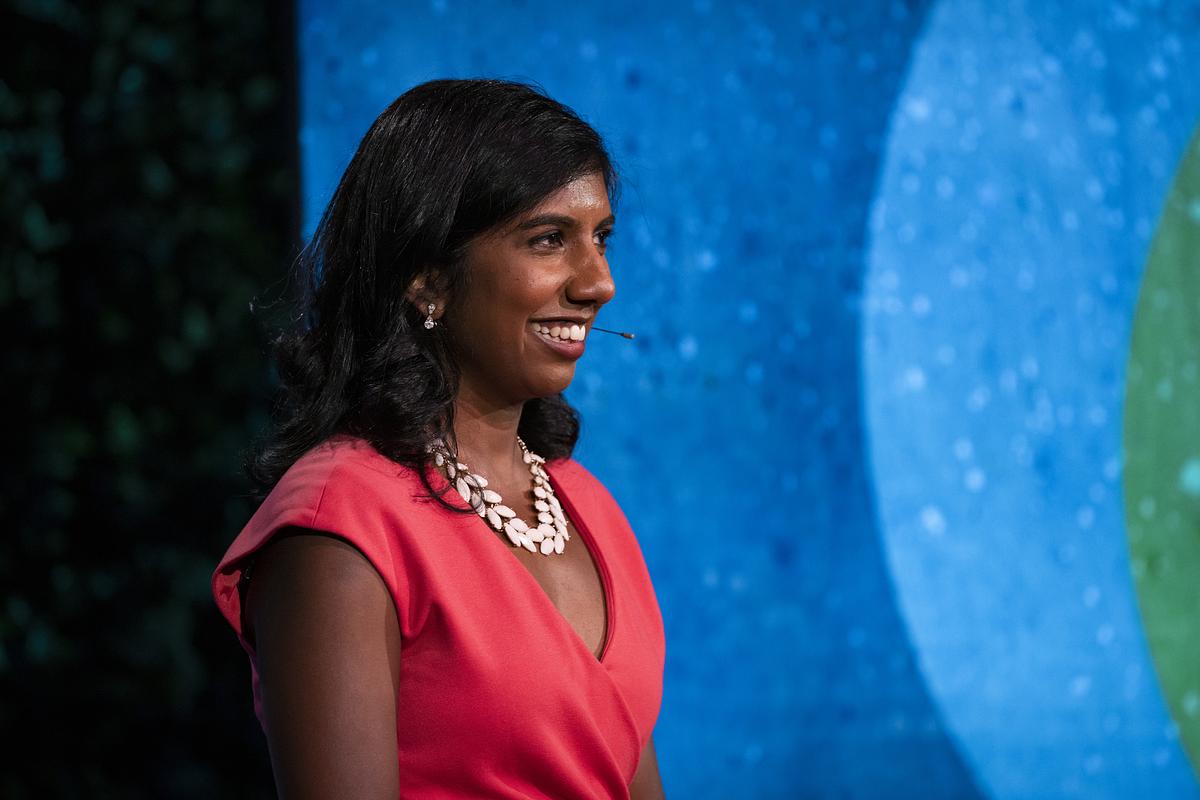
Nithya Vaduganathan speaks at TED@BCG: brighter future(s) at the TED World Theater in New York City on September 15, 2022. (Photo: Gilberto Tadday / TED)
Nithya Vaduganathan, talent strategy expert
Big idea: To find hidden talent, take a fresh look around.
How? Something interesting is happening in the labor market: there are lots of job openings, yet many employers are struggling to find the right people to fill them. Why is that? Nithya Vaduganathan thinks it’s in large part because employers are using outdated practices to retract and retain talent – for instance, by focusing on features like college degree or time in role, which are not necessarily predictive of success. Vaduganathan offers five tips that will actually help employers fill open positions — while also helping job seekers advance their careers. First: leaders and managers must figure out what actually needs to get done, as opposed to listing Frankenstein job posts searching for impossibly qualified candidates. Second: “screen in” candidates, as opposed to screening out based on certain criteria like college degrees. (Great candidates don’t need to check every box, she says.) Third: start with coffee – or, in other words, start small. Try out micro-internships: small-scale, paid projects that create a low-risk path to hiring, particularly of college and grad students from overlooked schools. Fourth: look beyond your floor – there may be talent hiding inside your organization, just a floor above you. And, lastly: let your people go so they can grow. Companies that allow their people to move around internally report more diverse, innovative and effective teams.
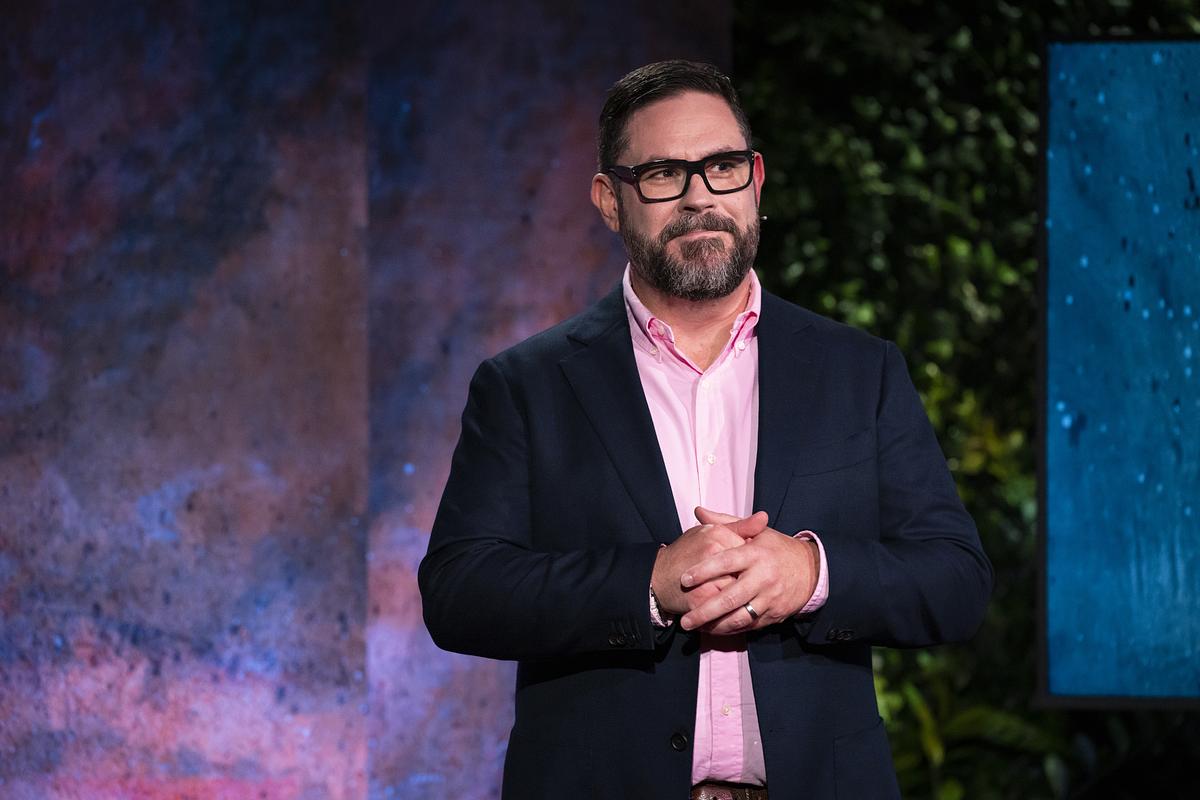
Paul Catchlove speaks at TED@BCG: brighter future(s) at the TED World Theater in New York City on September 15, 2022. (Photo: Gilberto Tadday / TED)
Paul Catchlove, reflective leader
Big idea: Self-reflection can add value to your work life, increasing performance and helping you make better decisions and build better relationships.
How? Reflection is about learning, says Paul Catchlove: looking at our lives without judgment, but with a critical lens. So how do we do it? Catchlove recommends making reflection a habit, whether it takes the form of purposeful thinking, journal entries, audio notes or discussions with a mentor or friend. In the workplace, this would look like consistently setting aside time to distill learnings on what worked, what didn’t and why – and then making a personal commitment to do things differently next time. So next time a meeting leaves you feeling agitated, take some time to sit down, take a breath and reflect (whether it’s after work or the next morning). Over time, cultivating a habit of reflection will glean deeper insights as you begin to recognize patterns of behavior – whether it’s a problematic relationship with a boss or client or an aspect of your job that you begin to realize leaves you feeling happy and fulfilled.